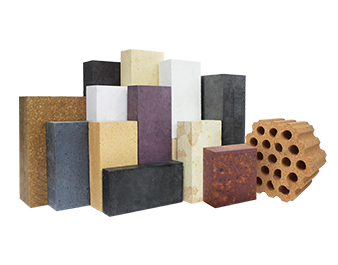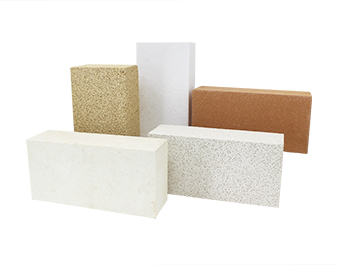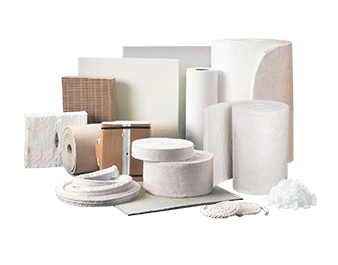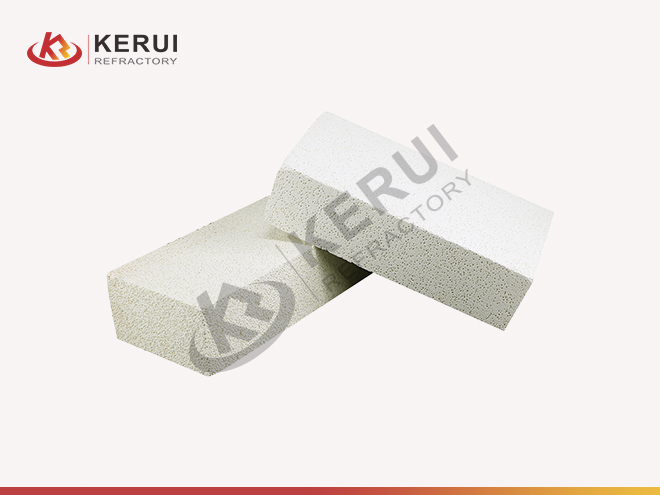
Mullite Insulation Brick
- Al2O3(%)≥: 42-72
- Fe2O3(%)≤: 0.5-1.0
- Bulk Density (g/cm³)≤: 0.6-1.0
- Cold Crushing Strength (MPa)≥: 1.5-3.5
- Standard Size: 230*114*65mm
- Certification: ISO9001/ISO14001/ISO45001/ISO50001
- Sample: testing of sample is available
Description of Mullite Insulation Brick
Mullite insulation brick is also called mullite lightweight brick, and it is a refractory material based on aluminum silicate. The alumina fluctuates between 40% and 77%, which has excellent thermal insulation performance. Mullite thermal insulation bricks contain mullite ore, which is made through high-temperature expansion treatment to cast bricks with light weight and excellent thermal insulation performance. In addition to mullite, mullite bricks with low alumina content also contain glass phase and cristobalite; those with high alumina content also contain a small amount of corundum. It can directly touch the flame, the bulk density is 0.55-1.35g/cm3, and the compressive strength is 1.2-4.5Mpa.
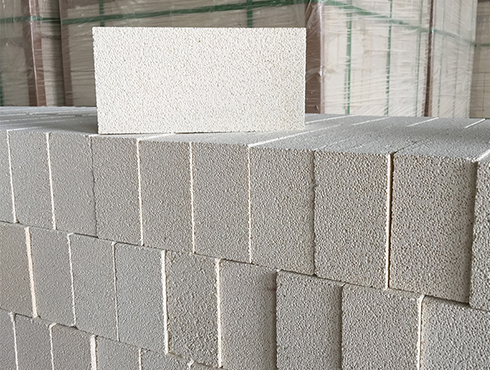
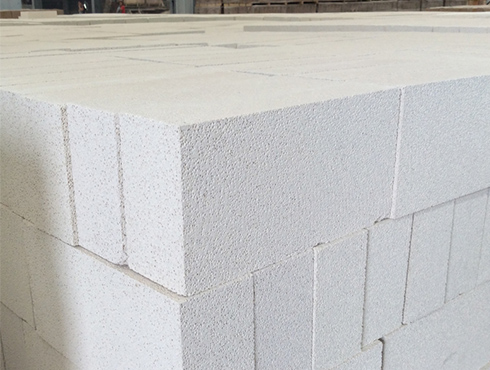
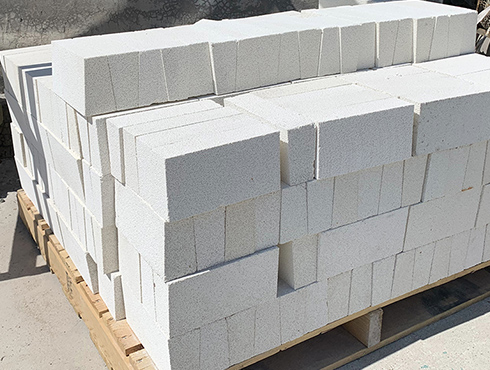
Technical Data Sheet of Kerui Mullite Insulation Brick
| Item/Grade | JM-23 | JM-26 | JM-28 | JM-30 | ||||||||
|---|---|---|---|---|---|---|---|---|---|---|---|---|
| ω (Al2O3)/% | 42 | 45 | 48 | 54 | 55 | 56 | 56 | 64 | 65 | 66 | 72 | 72 |
| ω (Fe2O3)/% | 1.2 | 1.0 | 1.0 | 0.9 | 0.8 | 1.0 | 1.0 | 0.75 | 0.65 | 0.65 | 0.55 | 0.55 |
| Bulk Density (g/cm³) | 0.6 | 0.8 | 1.0 | 0.7 | 0.8 | 0.9 | 1.0 | 0.8 | 0.8 | 1.0 | 1.0 | 1.1 |
| Cold Crushing Strength/MPa | 1.5 | 2.3 | 3.0 | 2.0 | 2.3 | 2.8 | 3.2 | 2.3 | 2.8 | 3.3 | 3.0 | 3.5 |
| Permanent Linear Change/% | -0.55 | -0.4 | -0.3 | -1.0 | -0.65 | -0.5 | -0.5 | -1.0 | -0.8 | -0.7 | -0.9 | -0.7 |
| 1260℃×12h | 1300℃×12h | 1300℃×12h | 1400℃×12h | 1400℃×12h | 1400℃×12h | 1400℃×12h | 1500℃×12h | 1500℃×12h | 1500℃×12h | 1600℃×12h | 1600℃×12h | |
| Thermal Conductivity 350℃ ≤/[W/(m·K)] | 0.19 | 0.24 | 0.31 | 0.21 | 0.25 | 0.30 | 0.32 | 0.28 | 0.32 | 0.34 | 0.40 | 0.43 |
Classification of Kerui Mullite Insulation Brick
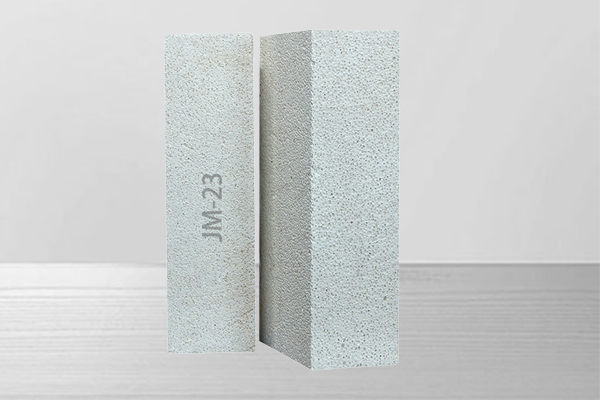
JM23
- Bulk density: 600-1000 kg/m³
- Operating temperature: ≥1350℃
- Thermal conductivity: 0.2-0.3 W/(m K)
Mullite insulation brick is mainly composed of mullite and a small amount of binder, it is white, the alumina content is between 38% and 44%, and the refractoriness is 1350°C. It is used as the inner lining and insulation layer of small and medium-sized industrial kilns.

JM28
- Bulk density: 800-1000 kg/m³
- Operating temperature: ≥1700℃
- Thermal conductivity: 0.28-0.34 W/(m K)
JM28 uses high-purity materials, adding high-temperature stabilizers and corrosion-resistant materials. Thus further increasing the density and compressive strength. It is often used in lining and insulation layers of high-temperature industrial kilns.

JM26
- Bulk density: 700-1000 kg/m³
- Operating temperature: ≥1430℃
- Thermal conductivity: 0.21-0.32 W/(m K)
The refractoriness of JM26 is above 1430℃. The refractoriness and pressure of JM26 are slightly higher than that of JM23. It is commonly used in the lining and insulation layer of some large industrial kilns.
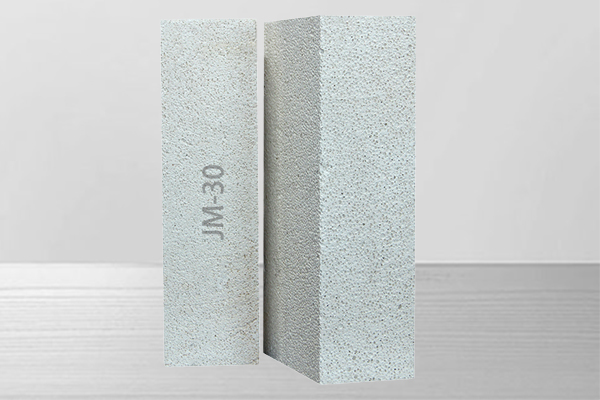
JM30
- Bulk density: 1000-1100 kg/m³
- Operating temperature: ≥1800℃
- Thermal conductivity: 0.4-0.43 W/(m K)
JM30 has the highest density and the highest service temperature is 1650℃, which is suitable for some extremely high-temperature industrial kilns. Kerui provides various types of mullite insulation bricks. Welcome to inquire!
Manufacturing Process of Mullite Insulation Brick
STEP1. Raw Material Preparation and Mixing
Mix mullite, quartz powder, silicate, and other raw materials evenly in a certain proportion to form a uniform mixture. Then add water, the amount of water added is generally controlled at about 50%, so that the slurry can maintain a good flow and be easy to form. In addition, additives such as water-reducing agents and green enhancers should be added during the mixing process.
STEP2. Forming
The prepared mud is injected into the model to form, and this step is formed by vibrating and compacting. The size of the insulating brick formed here can be square, round, or other shapes. A certain amount of pressure and vibration should be maintained during this process to ensure the uniformity of the bricks.
STEP3. Cutting
The formed bricks may be larger, and the extruded bricks are cut by a cutting machine after a certain length. The cutting machine is adjusted according to the required length of the adobe and cuts the adobe to the required size.
STEP4. Drying
Put the shaped insulation bricks into a drying room for drying to remove excess moisture. The drying temperature and time depend on the thickness and humidity of the insulation brick. Under normal circumstances, the drying temperature should not be too high, so as not to form cracks in the brick body.
STEP5. Sintering
After drying, the bricks need to be calcined in a hot furnace. After reaching the sintering temperature, the temperature is usually above 1500℃. After a certain period of time, the bricks can be fully sintered and then cooled slowly.
STEP6. Inspection and Packaging
The finished bricks need to be inspected and packaged to ensure that their quality meets the specified standards. The inspection usually includes size, density, compressive strength, etc., and the qualified bricks are packed and ready for transportation.
Advantages of Mullite Insulation Brick
Excellent Insulation Performance
Mullite insulation bricks are well known for their insulating properties due to their low thermal conductivity which prevents heat from being lost, which makes it an ideal insulating material to provide insulation in high temperatures.
Stable and Reliable Performance
The performance of mullite bricks in reducing the atmosphere is very stable. In particular, the calcium element it contains makes it resistant to corrosion and works stably for a long time at high temperatures.
High Compressive Strength
Although mullite insulation bricks are light in weight, they have a stable structure, can withstand a lot of pressure, and have excellent compressive strength.
Lightweight
There are air bubbles in the mullite insulation brick, and it is light in weight, so it is easy to install and can also reduce the strength of the construction personnel. It is the insulation brick that most people will buy.
Application of Mullite Insulation Brick
Power Industry
For example, thermal power plant boilers, chimneys, and other equipment need a high-temperature insulation layer that can withstand high temperatures and pressure. Mullite insulation bricks have excellent high-temperature stability and compressive strength, which can prolong the service life.
Petrochemical and Chemical Industry
For example, distillation towers of petroleum refining units and thermal insulation layer chemical reactors of storage tanks. Mullite thermal insulation bricks can effectively reduce energy consumption and improve production efficiency.
Glass Industry
For example, the lining and insulation layer of the glass furnace. It can effectively protect the glass furnace and prolong its service life.
Ceramic Kiln
For example, the insulation layer of kilns in the ceramic industry. It can provide a stable temperature environment and improve production efficiency.

